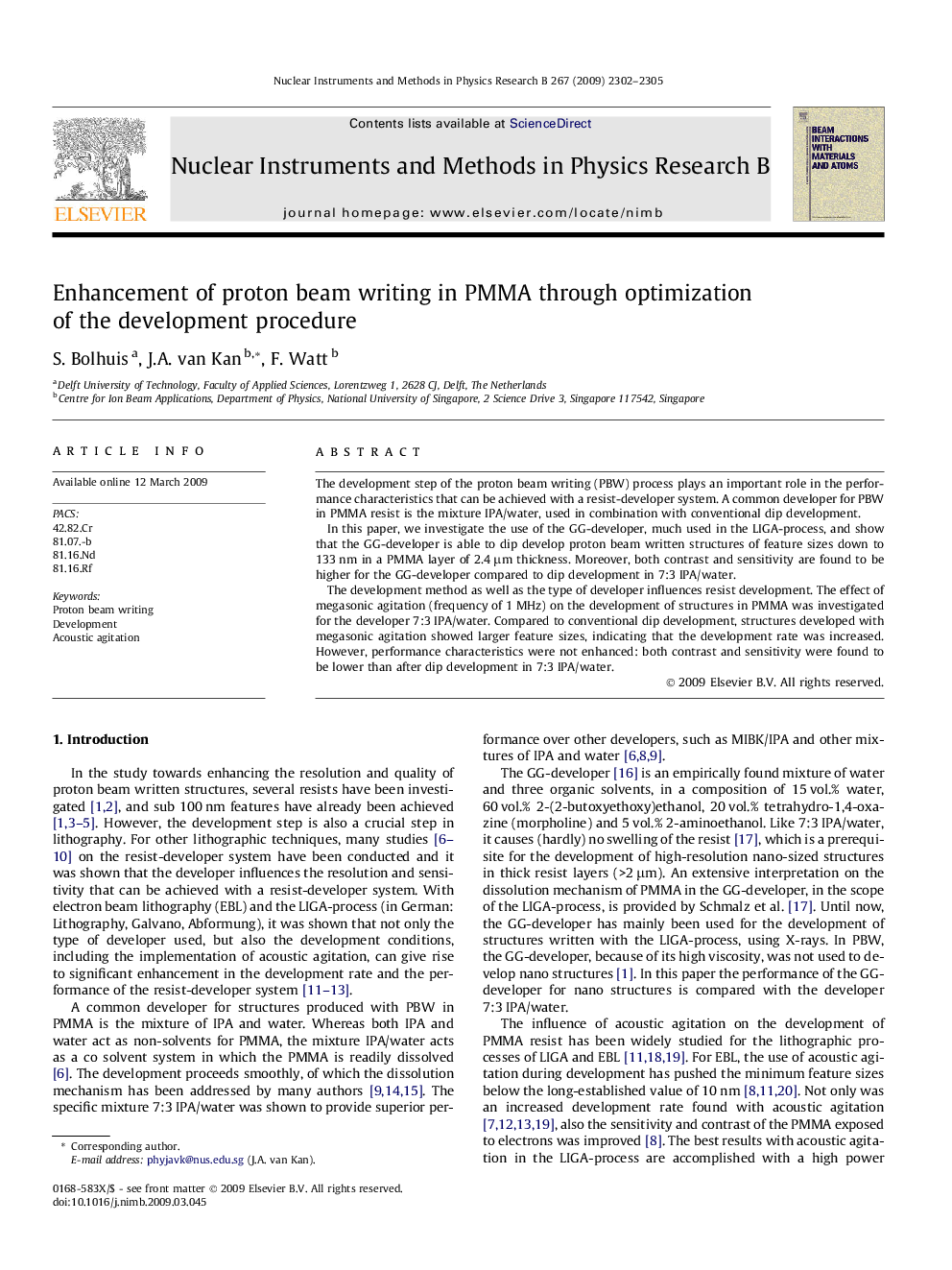| کد مقاله | کد نشریه | سال انتشار | مقاله انگلیسی | نسخه تمام متن |
|---|---|---|---|---|
| 1687284 | 1518754 | 2009 | 4 صفحه PDF | دانلود رایگان |

The development step of the proton beam writing (PBW) process plays an important role in the performance characteristics that can be achieved with a resist-developer system. A common developer for PBW in PMMA resist is the mixture IPA/water, used in combination with conventional dip development.In this paper, we investigate the use of the GG-developer, much used in the LIGA-process, and show that the GG-developer is able to dip develop proton beam written structures of feature sizes down to 133 nm in a PMMA layer of 2.4 μm thickness. Moreover, both contrast and sensitivity are found to be higher for the GG-developer compared to dip development in 7:3 IPA/water.The development method as well as the type of developer influences resist development. The effect of megasonic agitation (frequency of 1 MHz) on the development of structures in PMMA was investigated for the developer 7:3 IPA/water. Compared to conventional dip development, structures developed with megasonic agitation showed larger feature sizes, indicating that the development rate was increased. However, performance characteristics were not enhanced: both contrast and sensitivity were found to be lower than after dip development in 7:3 IPA/water.
Journal: Nuclear Instruments and Methods in Physics Research Section B: Beam Interactions with Materials and Atoms - Volume 267, Issues 12–13, 15 June 2009, Pages 2302–2305